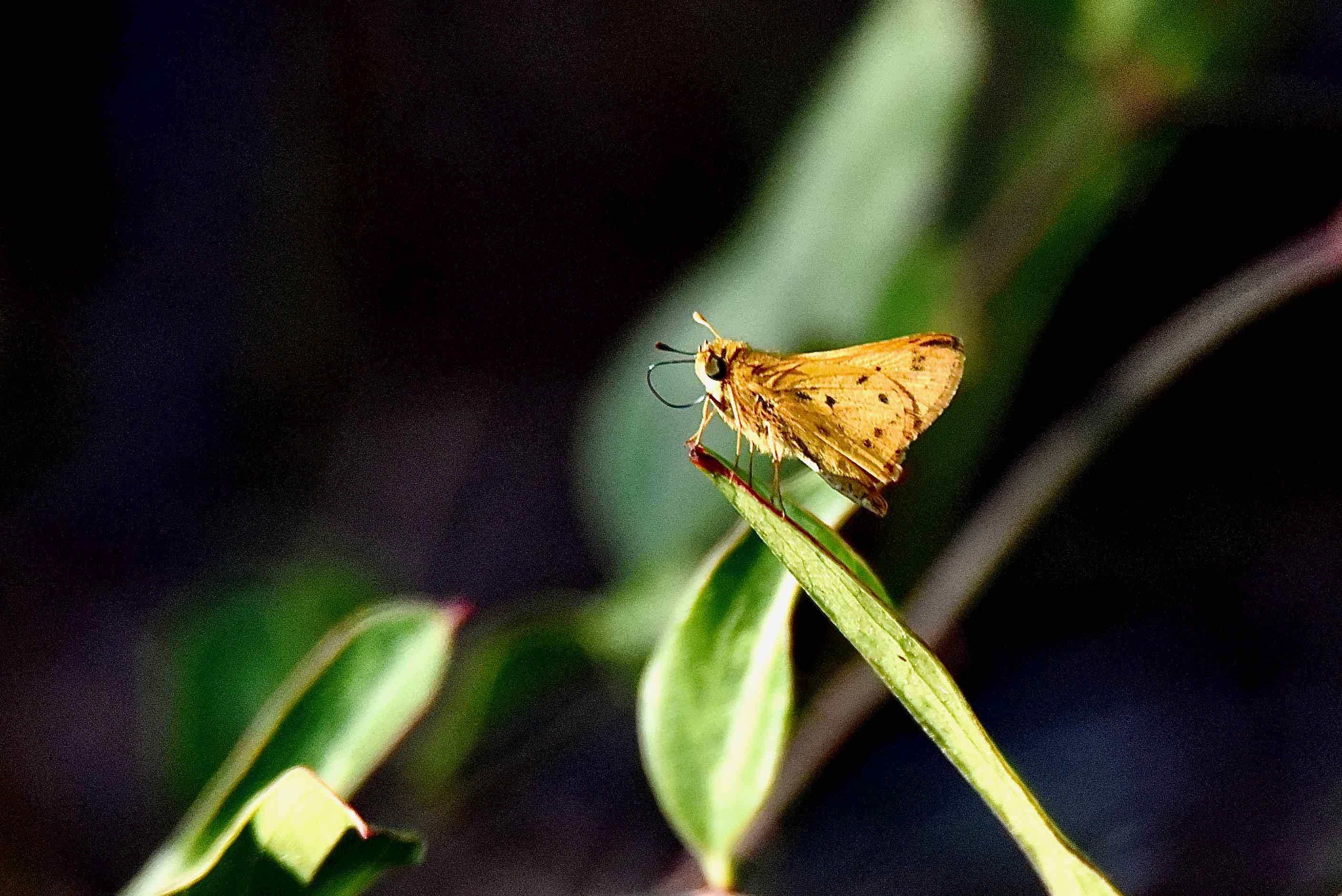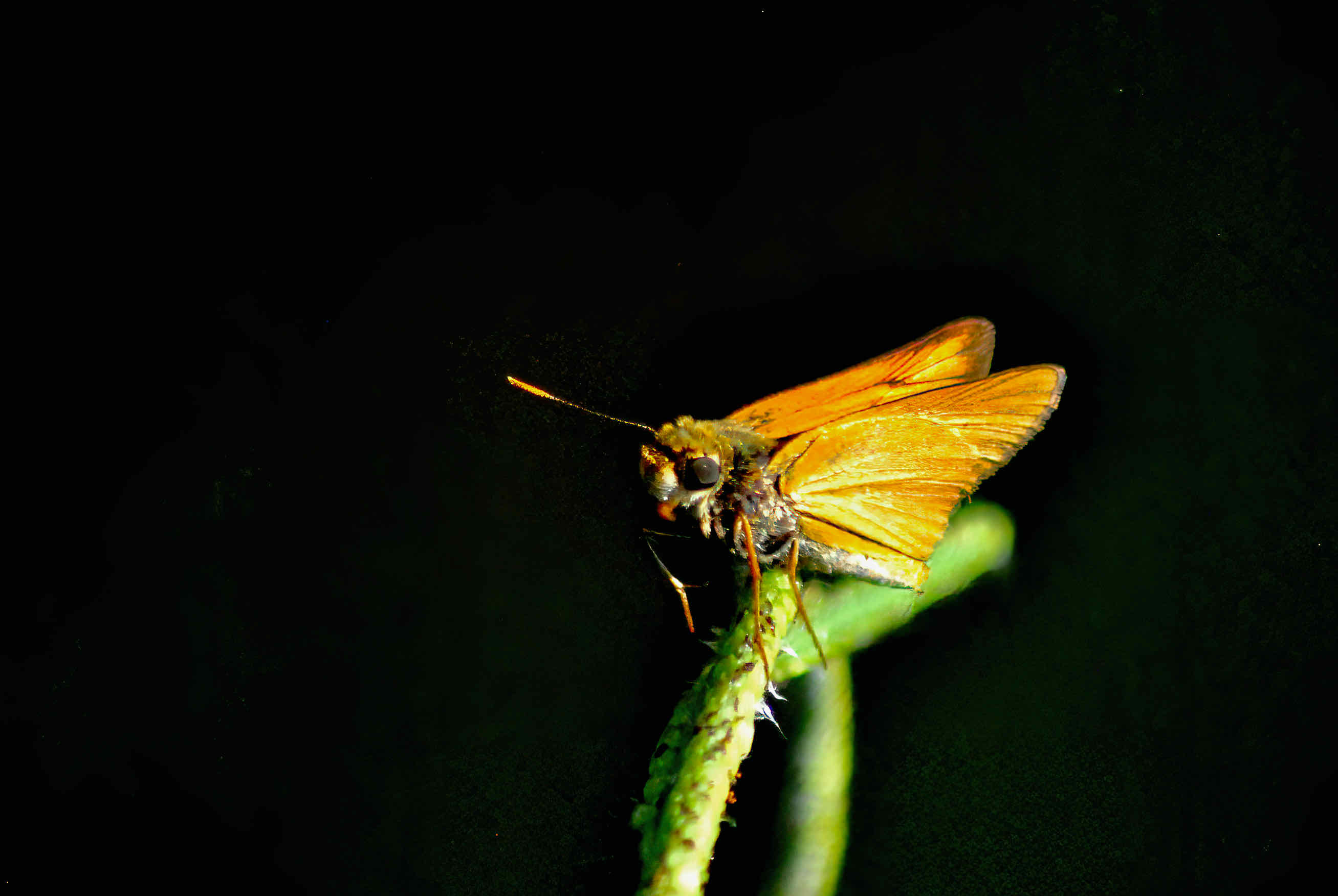
Fiery skipper butterfly, photographed at Seacrest Scrub Natural Area, Boynton Beach, Palm Beach County, in February 2020.
If you find a brownish-orange butterfly fluttering low, just above your lawn, there's a pretty good chance it's this guy, the fiery skipper, Hylephila phyleus. It likes grass. In fact, it depends on grass. Bermuda, St. Augustine and crab grasses are host plants for the fiery skipper's offspring.
Skippers, members of the Hesperiidae family, are small to medium butterflies, and tend to be relatively drabbly colored, with short, fat bodies and elongated forewings. They are rapid flyers, with their wings often a blur.
Our guy is no exception. The fiery skipper has a wingspan between one-and-a-quarter and one-and-a-half inches. They are a brownish-orange overall and have scattered black spots on the undersides of the wings, which tend to be folded upward when perched. They have short antennae with ends that look like clubs. Females are darker and have an irregular orange streak. Males have black markings along the edges of their wings that give them a "toothed" appearance.
Habitats for fiery skippers includes open fields, lawns and roadsides, particularly where there's an abundance of flowers nearby. They're more likely to be found in residential areas than in the wilds of South Florida.
The fiery skipper is mostly a southern butterfly, ranging as far west as California, but it will wander and form colonies as far north as Minnesota, into southern New Engand and southern Canada. It can't take extreme cold, so these colonies tend to come and go with the seasons. Down south, it's "in-flight" during the warmer months, producing several generation. In peninsular Florida and south Texas, it's active year-round.
Its range extends through the Caribbean, Central America and South America as far south as Argentina. They are also found in Hawaii, where they are an introduced species.
Males spend their time looking for receptive females with which to mate, while females look for suitable habitat for their young. Once fertilized, females will deposit their eggs singly on the underside of a blade of grass, be it Bermuda, St. Augustine, Kentucky blue or a host of others. Over her lifetime, a female fiery skipper will lay between 50 and 150 eggs.
The eggs are white, turning blue as they mature. The fiery skipper caterpillars are green at first, turning dark brown as they progress through various stages over a period of 16 days. They are nocturnal, feeding on the grass hosts at night, then curling the blade and using it as a shelter during the day.
Despite their appetite for grass, fiery skippers don't do enough damage to be considered lawn pests in their natural range. Caterpillars will pupate for a week to 10 days before emerging as adults. First thing on their agenda: find a mate to begin the life cycle all over again.
While the larvae might be considered picky eaters, the adults are not. They'll sip nectar from any of a number of plants, including swamp milkweed, asters, Browne's blechum, blue mistflower, big caltrop, portuluca, sneezeweed, ironweeds and thistles.
Fiery skippers are membersof Hesperidae, the skipper family.



